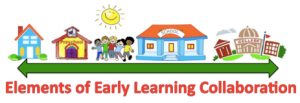Category Archives: commentary
Ted Beacon (Personalized Learning)
Personalized learning is the ability to make a child’s educational career more focused on what they need. It monitors what the students need to learn in order to move to the next level. It really means that no student is left behind. It enhances the ability for students to move at their own pace on what they are learning. No two people are the same, so they are most likely not going to learn the same way. If schools had more personal learning, it could help teachers enable quicker and more efficient learning skills. Education is the key to success and a future.
I feel that it is something that school systems should consider. It can be a key to help students on what they need to learn better, rather than making them sit through a class on what they already know. Some students can learn quicker than others and if teachers have to stick to a schedule, than they leave that student behind. I am one of those students, which has to put in the work in order to learn things better. I know that is doesn’t mean I cannot do what other people can do, it just means I have put more effort into my educational career. I feel if I had more of a personalized learning program, I would have been better at other subjects.
I find it comforting, that I get the feedback instantly with personalized learning. For example, I have written two discussion responses and I still do not know if I did it properly. Or that fact that some professors wait till the end of the semester to post the grades we have made. Those grades effect my future and I would like to know as soon as possible. Personalized learning is something students can gain something from
The positive thing about personalized learning is it monitors you so closely, that it will know if you are guessing. It can regenerate your leaning plan instantly because you failed a test, even though other students passes it. It will see when it is a good time to learn new material, for example if I fail at a learning activity because it is too early, then I will not get new material at that time. Although we have multiple tasks in a classroom, most of them are taught the same, but not with personalized learning. Personalized learning offers students to pick on how they want to learn their new assignments.
Parents and teachers, may not like change or may not like going more of a non-traditional route of schooling. I can relate to how they may feel, because I am always dragging my feet on the ground, when it comes to change. The definition of change in my Webster Dictionary is make or become different. When I think of that definition, it does not make me think that change is bad. I like to be different because it makes me unique. Now my question to the people who don’t want to change to personalized learning is, why would you not want to change our students’, your children’s, future for the better?
Link:
http://tedxtalks.ted.com/video/Reimagining-Learning-Richard-Cu
References:
Guralnik, D. (1970). Webster’s New World dictionary of the American language (2d college ed.). New York: World Pub.


